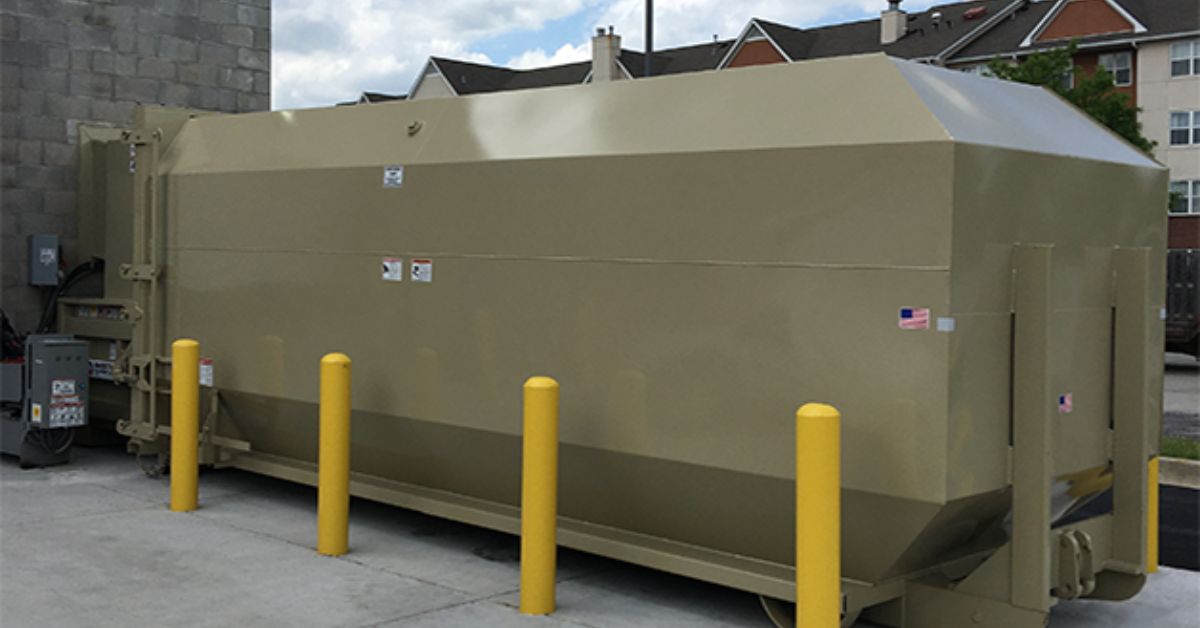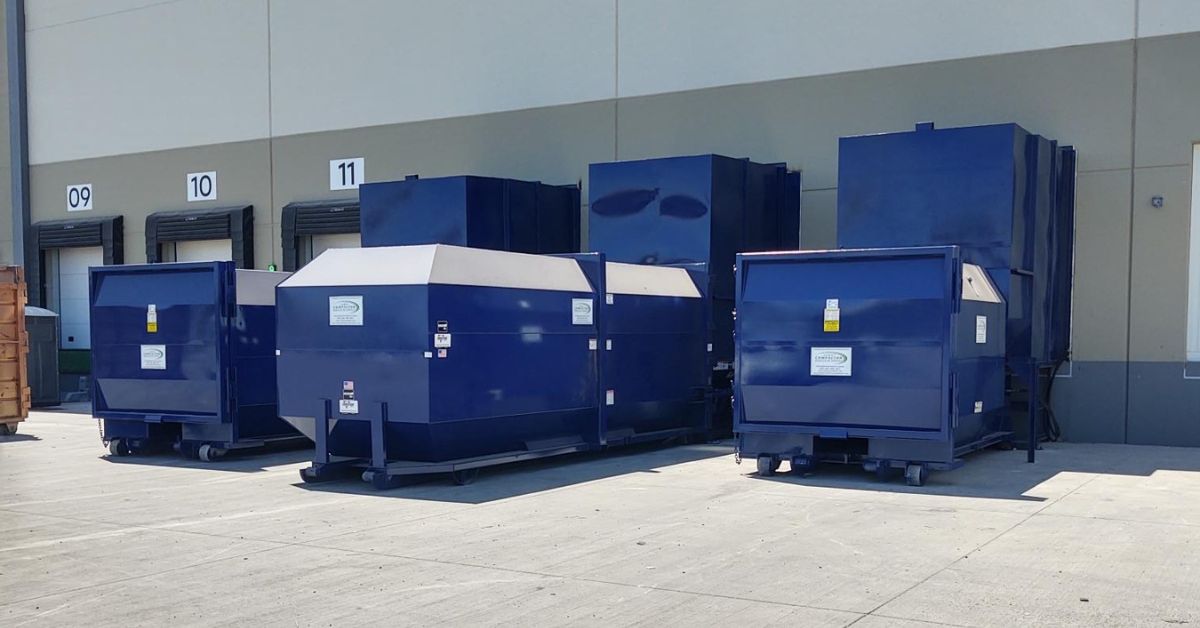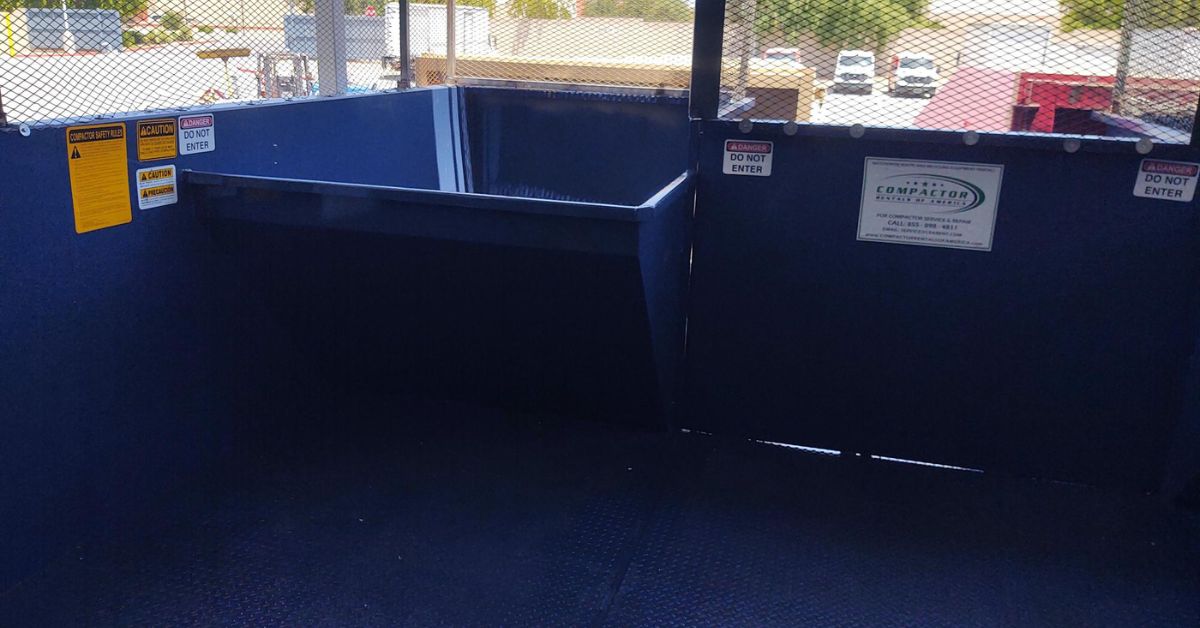
Efficiency and longevity, which are crucial for a company’s profitability, exist as key qualities of success for maintenance coordinators and property managers alike. A commercial trash compactor serves as an essential tool in achieving these goals by streamlining waste disposal and cutting operational costs. Like any machine, compactors require diligent care and attention. Explore these 10 tips for extending the life of your commercial compactor to maximize the value of your investment.
1. Plan Regular Maintenance
Neglecting maintenance can cause even the most robust machinery to succumb to wear and tear. Routine checks and servicing prevent minor issues from escalating into costly repairs, saving time and money by avoiding unexpected breakdowns during peak hours.
Regular maintenance boosts performance and prolongs the equipment’s lifespan, so schedule periodic inspections to guarantee all components function well. This proactive approach will help you identify potential problems early and swiftly address them. Align your maintenance schedules with the manufacturer’s recommendations and your specific operational needs.
2. Enable Safety Protocols
Proper training for all operators is an excellent first step toward safe compactor usage. Well-informed operators should avoid making errors that could cause accidents or machine damage.
Regularly inspect safety features like emergency stop buttons and safety guards to ensure their proper function. Foster an accident-prevention mindset throughout your operation by encouraging operators to report any irregularities for prompt resolution.
Post operating instructions and safety guidelines near the equipment as constant reminders of best practices. Cultivate a safer culture by conducting regular meetings and refresher training sessions.
3. Keep the Trash Compactor Clean
Accumulated debris and grime interfere with your compactor’s mechanical components, leading to malfunctions or breakdowns. Regular cleaning prevents these issues and promotes smooth operation.
Develop a cleaning schedule that details when and how to clean each compactor component. Use appropriate cleaning agents and tools to avoid damaging sensitive parts and regularly remove debris trapped in crevices so moving parts remain unblocked.
A clean compactor functions better while projecting a professional image to clients and visitors, showcasing your commitment to high standards.
4. Address Wear and Tear
All machines experience wear and tear over time, including compactors. Recognizing and addressing signs of deterioration early can prevent costly repairs later. Regularly inspect components for signs of wear, such as frayed belts, leaking seals, or cracked hoses.
Promptly replace worn parts to maintain optimal performance. Delaying repairs can lead to more severe damage and increased downtime. Keep an inventory of essential spare parts to facilitate quick replacements and minimize operational interruptions.
Collaborate with a reliable trash compactor maintenance service like Compactor Rentals of America for specialized care and repairs. Their expertise will provide an accurate diagnosis, keeping your compactor in top condition.

5. Learn Efficient Loading Techniques
Proper loading techniques maximize compactor efficiency and longevity, so make sure your crew understands how to load machinery properly. Overloading strains the machine, leading to premature wear or mechanical failure, while underloading reduces efficiency and increases operational costs.
Train operators to load the compactor according to manufacturer guidelines, which likely advise against placing oversized or inappropriate materials into the compactor, as this can result in serious damage. Encourage operators to distribute waste evenly within the chamber for optimal compression.
Maintaining a balance between load size and compactor capacity establishes efficient operation and prolongs the machine’s lifespan. Consider installing sensors or monitoring systems to provide real-time feedback on loading practices and identify areas for improvement.
6. Incorporate Lubrication Into Your Maintenance Routine
Proper lubrication reduces friction between moving parts, minimizes wear, and enhances performance. Neglecting lubrication can negatively impact trash compactors, introducing more friction, heat buildup, and premature component failure.
Follow the manufacturer’s recommendations for lubrication intervals and use the appropriate type of lubricant for each component. Regularly check lubrication levels and replenish them as required. Consider implementing an automatic lubrication system for consistent application to reduce manual labor.
Well-lubricated compactors operate more efficiently, consume less energy, and require fewer repairs, significantly extending your equipment’s lifespan.
7. Monitor the Hydraulic System
A compactor’s hydraulic system generates forces required for compression, making it a key component of the machine. Monitor hydraulic fluid levels and inspect hoses, fittings, and seals for leaks or damage.
Schedule routine hydraulic system maintenance to identify and address potential issues before they escalate. Keep spare hydraulic fluid on hand and top off reservoirs to maintain peak performance.
Consult with a professional if you encounter persistent hydraulic problems. A specialist can diagnose complex issues and implement effective solutions to keep your compactor reliable for longer.
8. Choose an Optimal Location
Location affects trash compactor performance. Select a level, stable surface that supports the compactor’s weight and minimizes vibrations. Avoid placing the compactor in areas prone to excessive moisture, temperature fluctuations, or exposure to corrosive substances.
Maintain easy access and maneuverability around the compactor. This accessibility simplifies maintenance and reduces the risk of accidental damage. Consider protective barriers or enclosures to shield the compactor from environmental hazards, further extending its life and enhancing safety.

9. Implement a Comprehensive Training Program
Develop a training program that covers all aspects of compactor operation, maintenance, and safety.
Provide hands-on training for new employees and offer refresher courses for experienced operators. Encourage open communication and feedback to identify areas for improvement and address concerns.
Regularly update your training program to incorporate new techniques, technologies, and industry standards. A knowledgeable and skilled team will keep your compactor in peak condition.
10. Evaluate Energy Consumption
Determine your compactor’s energy consumption to identify improvement opportunities and cost savings. Implement energy-saving practices like optimizing load sizes, maintaining proper lubrication, and scheduling regular maintenance. Consider upgrading to a more energy-efficient model if your current compactor seems outdated or consumes excessive power.
Reducing energy consumption lowers operational costs and promotes environmental sustainability. Prioritizing energy efficiency demonstrates your commitment to responsible resource management.
Establishing a Long-Term Maintenance Plan
Develop a comprehensive maintenance plan to extend your commercial compactor’s life by outlining maintenance schedules, responsibilities, and procedures. Include regular inspections, cleaning, lubrication, and component replacement. Monitor performance metrics and adjust your plan as needed to address emerging issues or changing operational demands.
Share your maintenance plan with relevant personnel and make sure everyone understands their role in maintaining the compactor. A coordinated effort keeps your compactor in optimal condition for years to come.
Extending the life of your commercial compactor requires a proactive and informed approach. Understanding these tips allows you to create a more efficient, reliable waste management operation that improves your bottom line and supports your organization’s long-term success. For further insights, connect with industry experts like Compactor Rentals of America.


